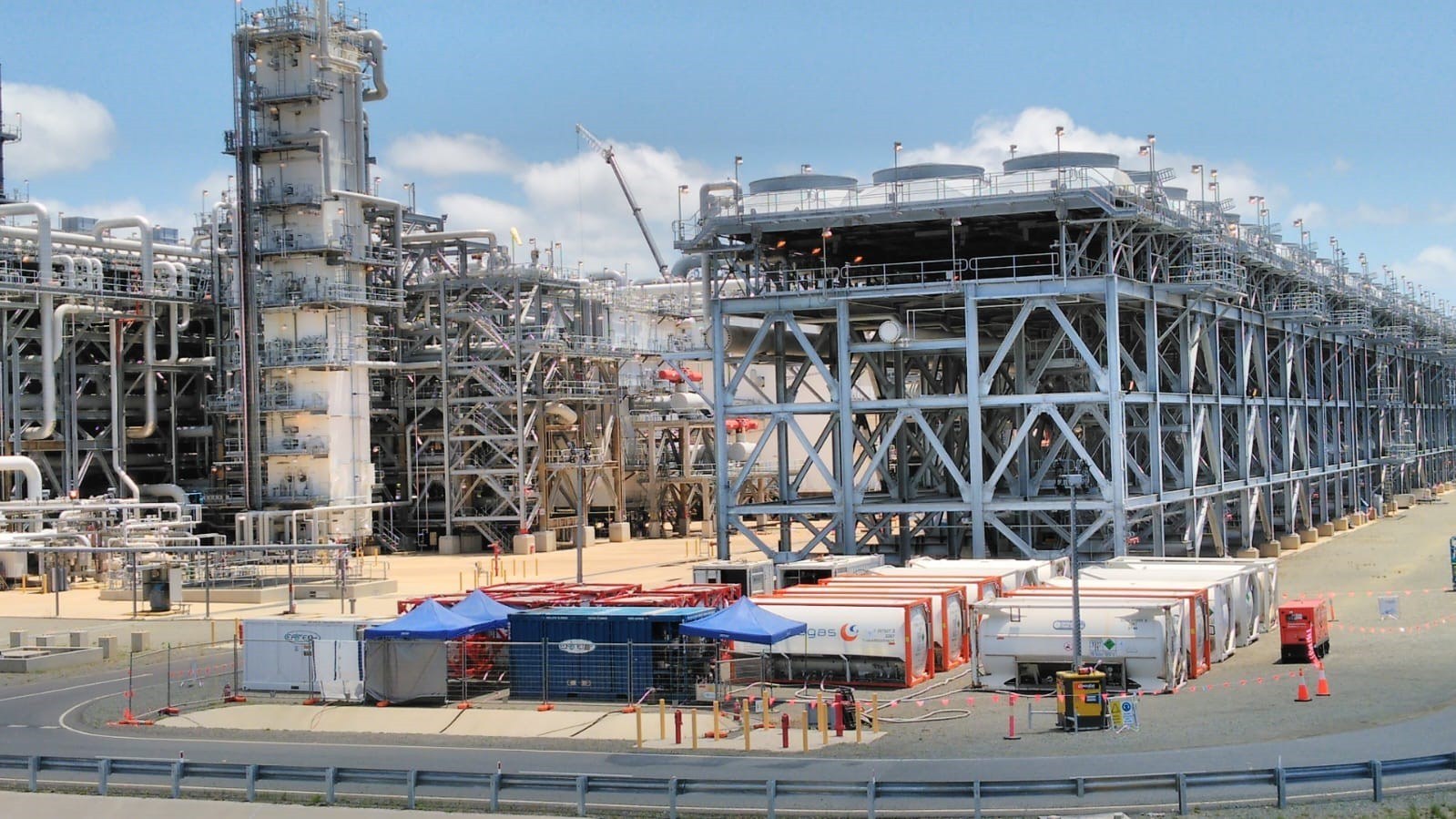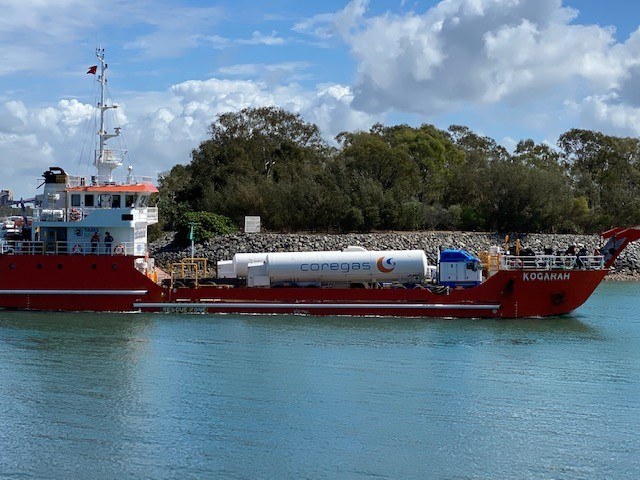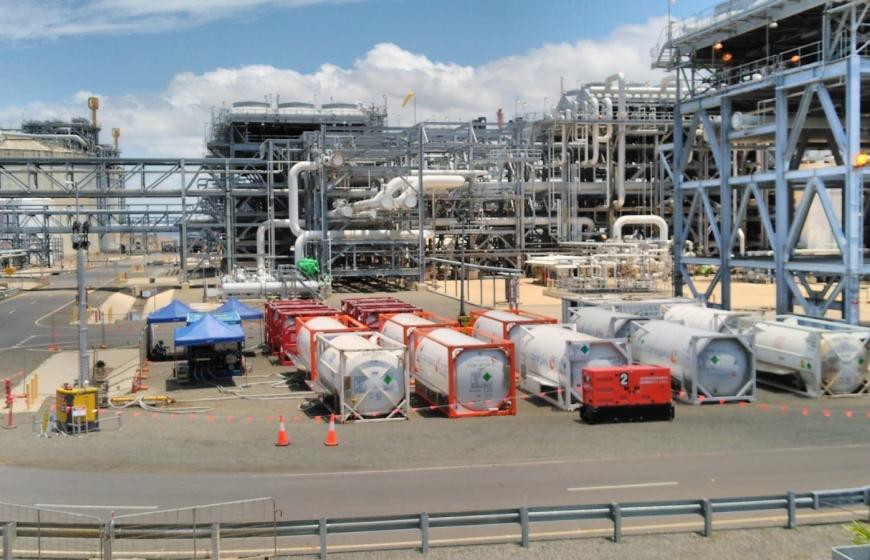Curtis Island, located just over an hour from mainland Queensland, houses the Queensland Curtis LNG (QCLNG), Australia Pacific LNG (APLNG) and the Santos GLNG plants. With Curtis Island’s facilities and reach, Coregas were asked to move forward with this project, which after less than three months, proved our capabilities as a leading Australian-owned gas company. We successfully delivered a significant volume of liquid nitrogen, comparable to approximately 400 Olympic-sized swimming pools, to these plants, executing the greatest turnaround project in Australia.

Background
Coregas is an Australian-owned industrial gases company, with over 45 years of experience within the industry. Backed by Wesfarmers, Coregas continues to deliver high-quality products and service, with supply capability, flexibility, and reliability remaining at the forefront of our operations.
Purging is carried out to avoid the possibility of an explosive air/gas mixture existing or forming in consumer piping, appliances, or confined spaces. It is defined as the displacement of air, or an inert gas, by a fuel gas; or the displacement of a fuel gas by air, or an inert gas. The process ensures that you have control over which gases are in your gas delivery system, and therefore which gases are being exposed to internal components, sensors, or other equipment. It also helps to prevent unwanted reactions from taking place, which can greatly increase the service life of related components.
Empty LNG tanks or partially full LNG tanks can be purged by passing an inert gas through their interiors to eliminate substances that increase the chances of combustion. Nitrogen gas is an ideal candidate for LNG tank purging due to its inert, non-combustible properties.
Nitrogen is the most common gas used for purging as it is cost-effective, easy to produce, and relatively safe as a gas.
Opportunity
Coregas were given the opportunity to execute this project given our capacity to complete it within the given lead time, due to our facilities’ proximity to Curtis Island. The manufacturing facility in Mackay and local office at Gladstone would be ideal in meeting our customers’ high demand and expectations regarding asset deployment and overall delivery of the significant quantity of liquid nitrogen requested in a short period of time.

Results
Ultimately, Coregas were able to mobilise a fleet capable of moving roughly 100 times the volume of a Goodyear Blimp in liquid nitrogen to the QCLNG plant, and approximately a quarter of the size of Melbourne Cricket Ground to the APLNG plant.
The Coregas branch in Gladstone was critical to this process as it would be the main base point to transport the nitrogen, given that it was 20km away from the island. Additionally, our ASUs in both Port Kembla and Mackay allowed us to exercise supply capabilities, having contingency stores should there be any setbacks during the delivery process.

Challenges
The scale and gravity of the project came with a new set of challenges for Coregas.
The number of kilometres driven during the entirety of this project amounted to almost 100,000km, with the distance to just the QCLNG plant reaching almost two times the circumference of the Earth. This travel itself illustrated the extent of the turnaround this project required, culminating in deliveries through the entirety of three months, including the weekends. Coregas employed the responsiveness and flexibility of our workforce to execute this successfully.
Conclusion
The effective execution of this project demonstrates Coregas’ strong supply chain fundamentals, commercial acumen, and the ability to replicate these results in future projects of a similar scale. We have shown our capacity as well as exercised the values of adaptability, reliability, alignment, and customer focus. Supplemented by the investment in nitrogen assets and backed up by years of expertise, Coregas is unmatched in the industry and the successful implementation of the Curtis Island purge projects validates this position.
